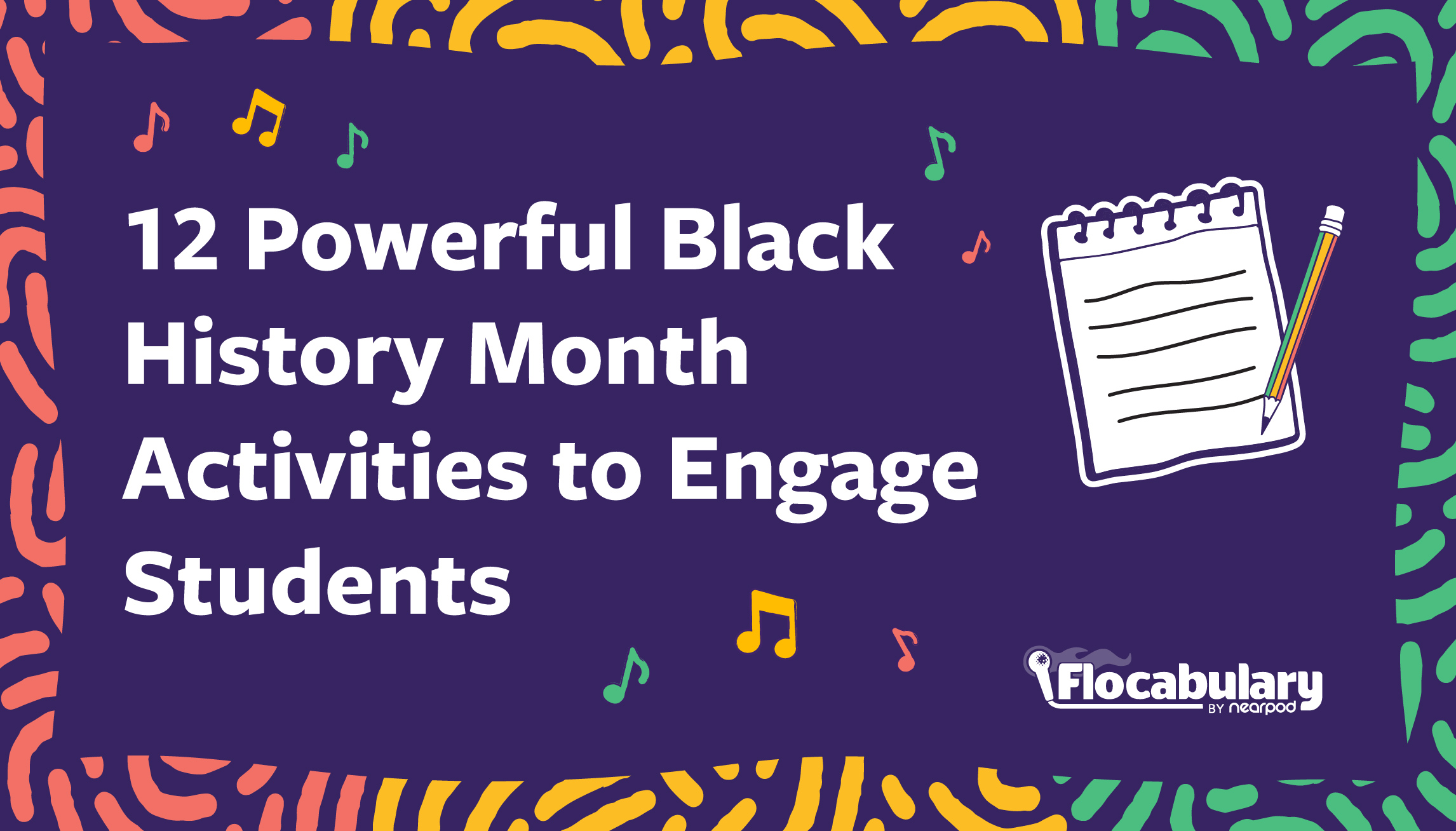
12 Powerful Black History Month Activities to Engage Students
Each February, we observe Black History Month to remember important people and events in Black history. Black history relates to all citizens and our shared backgrounds as Americans. Flocabulary has engaging hip-hop-infused Black History Month lessons and activities that are rigorous yet fun for students. Use these activities, songs, and videos to honor Black history in your curriculum—not just for the month but all year long.
New to Flocabulary? Teachers can sign up for a trial to access our lesson videos and assessment activities. Administrators can get in touch with us to learn more about unlocking the full power of Flocabulary through Flocabulary Plus.
12 Powerful Black History Month Activities to Engage Students
1. Amplify student voice with lesson videos from past winners
Student voice and authentic learning experiences are at the core of Flocabulary. This Black History Month, inspire your class by using lesson videos created by past student winners! These videos celebrate the achievements of influential Black historical figures, as told through the creative voices of students. Each winning rap has been transformed into a Flocabulary video lesson that engages students nationwide, showcasing the power of storytelling, research, and creativity.
The Flocabulary Student Voice Rap Contest has evolved! Now held in the fall, the contest invites students to research and write about any historical figure who made a significant impact. Submissions open in October through November, with winning lessons debuting in April during National Poetry Month.
Teachers can submit entries without needing a Flocabulary account. Use tools like Lyric Lab to help students craft their raps and check out past winners’ videos to spark inspiration.
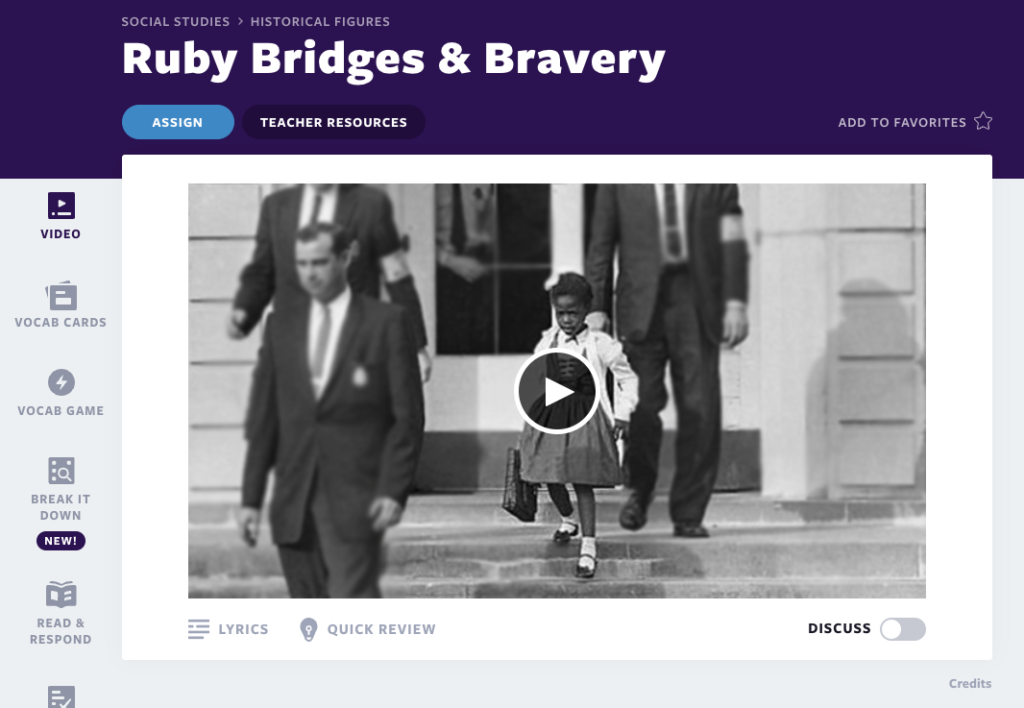
2. Write from Ruby Bridges’ point of view
In 1960, six-year-old Ruby Bridges changed history by becoming the first black child to desegregate an all-white elementary school by herself. Watch our video about Ruby Bridges, which tells the story of how she overcame many obstacles to integrate into William Frantz Elementary School, showing great courage in the face of discrimination.
Then, use this lesson plan to have students write a page from Ruby’s journal from her perspective and compare and contrast Ruby’s story told from first and third-person points of view. Flocabulary’s famous Point of View video is a great resource to use if you’re interested in Black History Month activities. Through this assignment, students will learn how Ruby Bridges changed history and discuss her courage and determination in facing obstacles.
3. Assign students to write a rap/poem about their dream
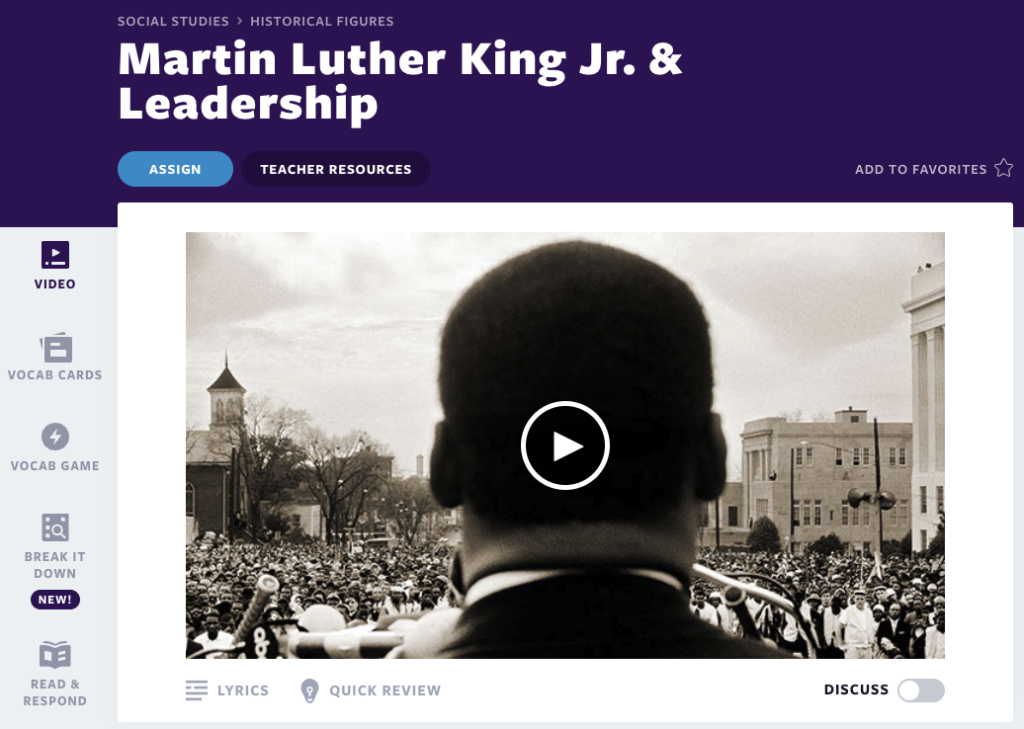
Teach students about the major events in the life of Martin Luther King Jr. with our lesson video. Students will learn about King’s biography, including the segregation that he and the Black community faced, his work as a minister, and his role in the Montgomery Bus Boycott and Civil Rights Movement. The video also shows King’s “I Have a Dream” speech.
After watching the video, assign students the rest of the activities in the lesson sequence. Flocabulary’s lesson sequence follows Bloom’s Taxonomy. Accomplish the final level for “create” by using Lyric Lab. Students can listen to and read MLK’s “I Have a Dream” speech, then write original raps about their own dreams for the world using quotations from King’s speech and their own figurative language.
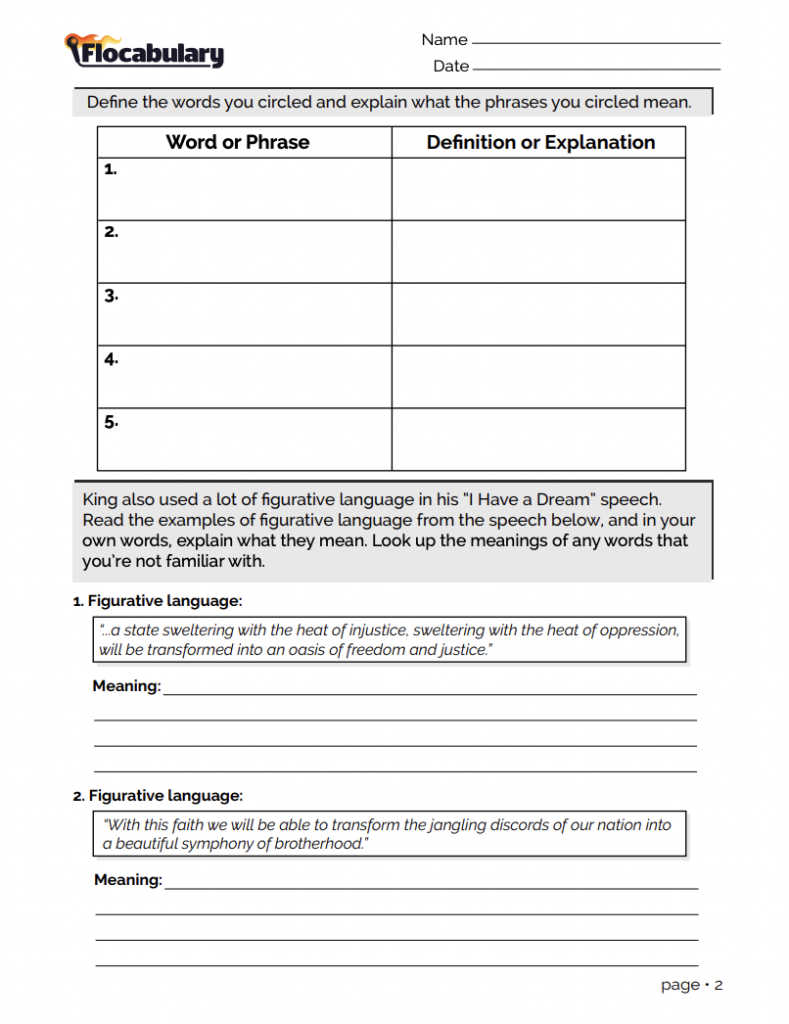
4. Analyze Dr.King’s “I Have a Dream” speech
As mentioned previously, Flocabulary’s MLK video describes his commitment to nonviolent means of protesting and features clips from the “I Have a Dream” speech given at the March on Washington. You can pair this video in multiple ways for your Black History Month activities. For example, you can use our “I Have a Dream” Speech Analysis Lesson Plan to have students review literary terms, rhetorical devices, and figurative language with a scavenger hunt throughout the speech. Then, you can have students discuss or write about the speech using literary terminology.
5. Teach poetry through Langston Hughes’ “Harlem”
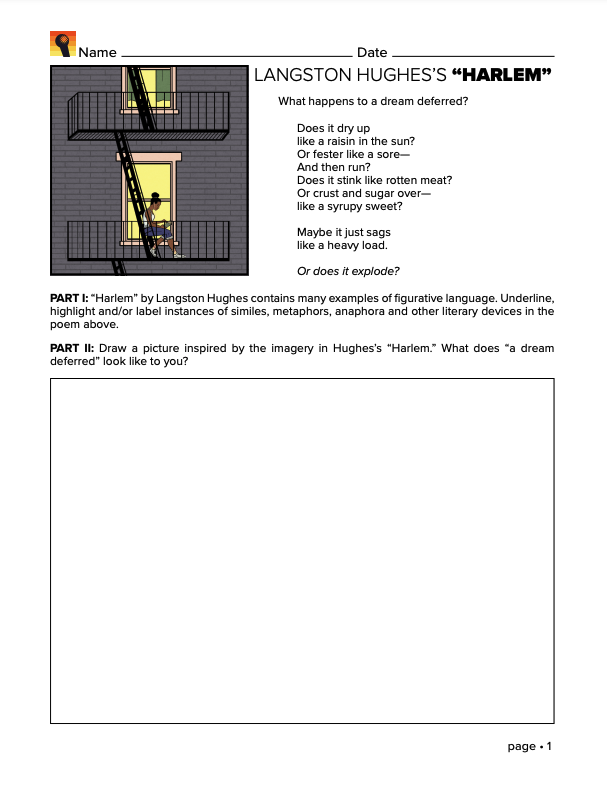
Introduce students to “Harlem,” the Langston Hughes poem that gave Lorraine Hansberry’s A Raisin in the Sun its name, using Langston Hughes’ “Harlem” video and lesson. Students will analyze the social context and figurative language that made the poem so powerful.
After reviewing the lesson and analyzing the poem, students will also write their own poems inspired by “Harlem.” Use the printable worksheet in our lesson to assign these Black History Month activities to your students.
6. Explore perspectives on race
What is race? How does it affect different people every day? In this video, four Flocabulary rappers share their perspectives on race. Students will learn that even though race isn’t in our genes, it has a powerful effect on people and society. When teaching Black History Month activities and topics, it’s important to embed social and emotional learning teachings into this instruction. The major takeaway is not to let anyone define you based on appearances and not to define others that way either.
7. Have students write and perform a skit or rap on the Supreme Court case Shelby County v. Holder
A constitutional amendment granted African Americans the right to vote in 1870. However, the promise of that amendment would not be realized for decades. It would take a group of dedicated organizers in Selma, Alabama, to plan a series of marches before that important right was protected by the Voting Rights Act. This Black History video about the Voting Rights Act & Selma March explains the importance of the Selma marches, why the Voting Rights Act was needed, and what voting rights look like in our country today.
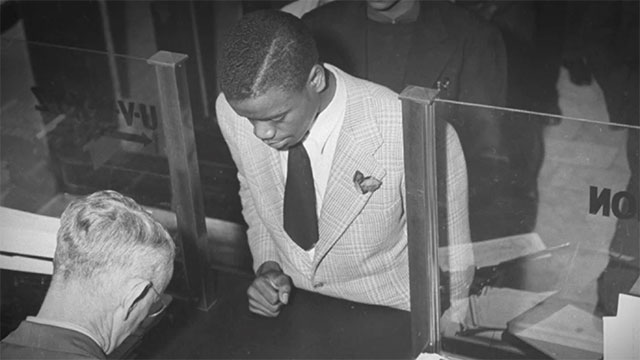
After studying the Selma March and the case of Shelby County v. Holder, use this lesson plan to have students discuss how current events can be seen as examples of continuity and change with regard to voting rights. Have students write and perform a rap or skit that depicts the Supreme Court case in its historical context.
8. Teach about Maya Angelou and figurative language using the Vocab Game
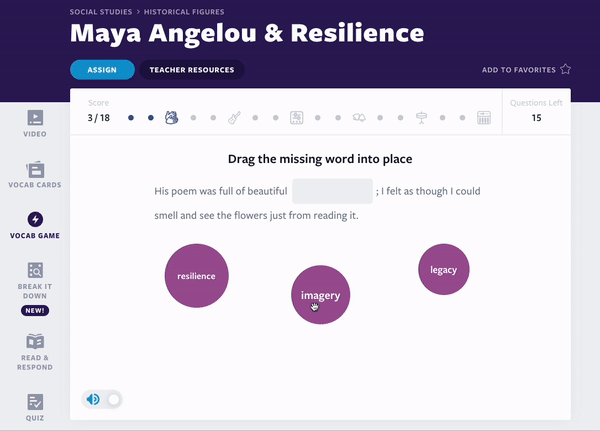
This video lesson introduces students to Maya Angelou, describing her extraordinary life and the significance of her work. Students will analyze Angelou’s trademark use of figurative language and vivid imagery in her poems and memoirs.
Vocab Game, which is the third part of Flocab’s lesson sequence, can be used to teach figurative language. In this drag and drop activity, students match the lesson’s vocabulary words, including figure language terms, to images or definitions, complete sentences, or find synonyms to build a beat.
9. Have a classroom discussion about The Tuskegee Airmen
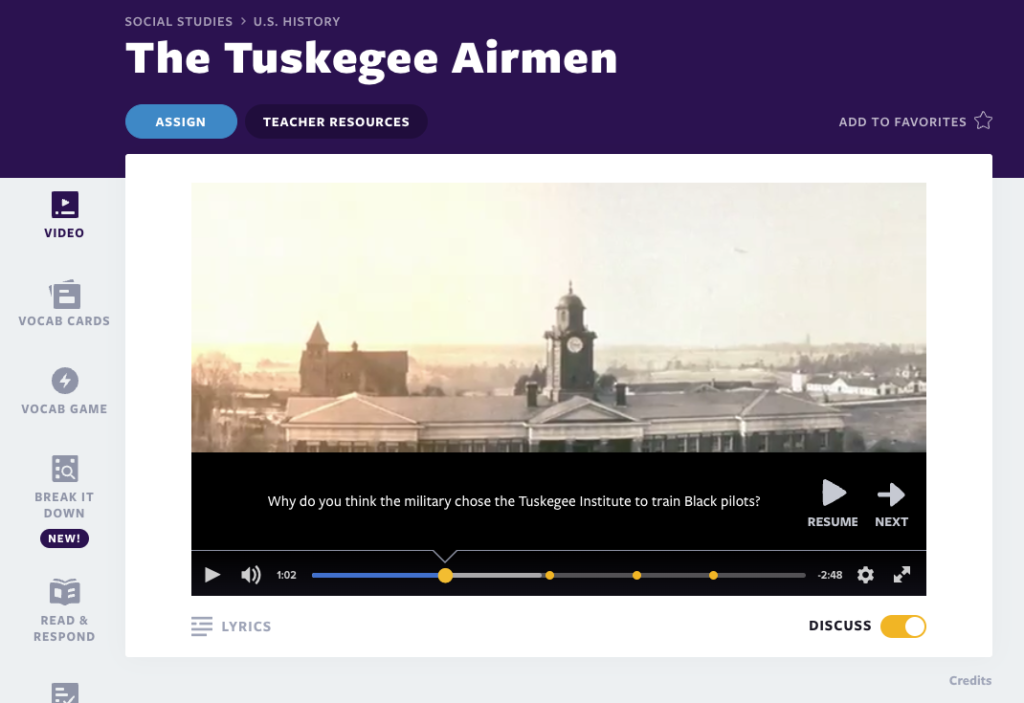
The Tuskegee Airmen were the first Black American military pilots. In this lesson, students will learn about the Tuskegee Airmen’s contributions during World War II and how their valiant efforts paved the way for desegregating the military and American society.
Turn on Discuss Mode in the video lesson to have meaningful classroom discussions. Prompts will appear at specific points during these Black History Month videos and pause to facilitate further discussion.
10. Have students teach the Civil Rights Movement
The fight for civil rights was the fight for equality. In this song, witness Martin Luther King Jr. use the most powerful weapon of all: words. The Civil Rights song covers the passing of the Civil Rights Bill, the Voting Rights Act, and Brown v. Board of Education. But MLK couldn’t always keep the peace, and the song also covers some of the more violent moments in the fight for civil rights, including the assassinations of JFK and Malcolm X.
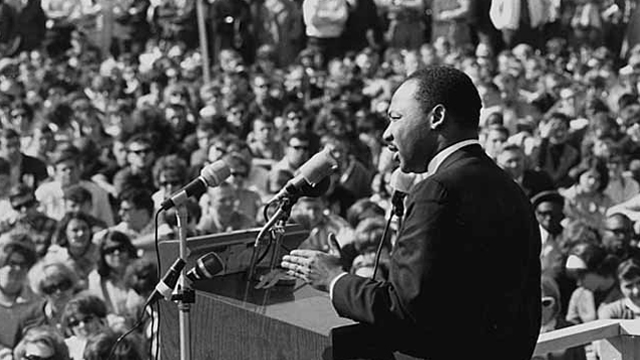
After watching the Civil Rights Movement video, assign or have students pick an event from the Civil Rights Movement to create their own lesson about. Have them teach about the topic to the class – they can even use Flocabulary as a teaching tool! This will deepen students’ understanding of key events in Black history while building their skills in interpreting and explaining events in a style that’s appropriate to a certain audience.
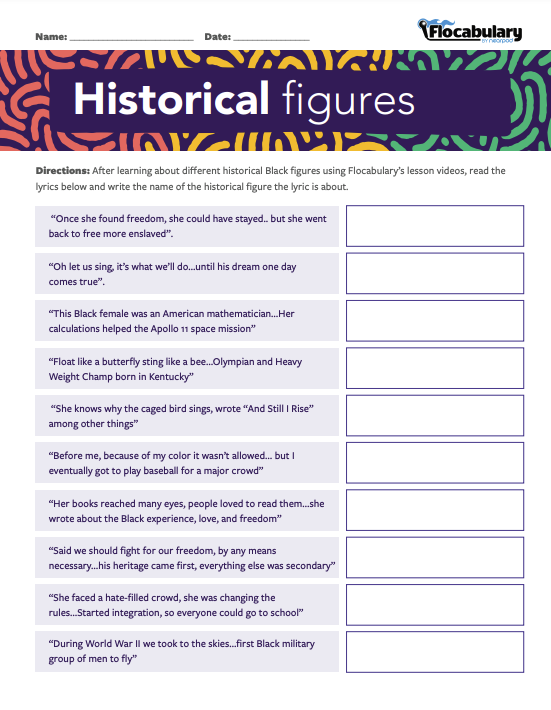
11. Match Flocabulary lyrics to Black historical figures
With Flocabulary’s catchy songs, students will remember specific facts and lyrics about historical figures and events. After reviewing songs and videos about different historical Black figures, have students read the lyrics of the songs and write the name of the historical figure the lyric is about. Download these Black History Month lessons and activities and print this worksheet to test out students’ memory and knowledge!
12. Explore all of Flocabulary’s Black history month videos and activities
There are even more Black History Month activities and lesson videos to choose from! Flocabulary’s video-based lessons create emotional connections by harnessing the power of music, storytelling, and poetry. These high-quality videos captivate students and make the learning experience memorable and interesting. Click below to explore more lessons you can teach for Black History Month.
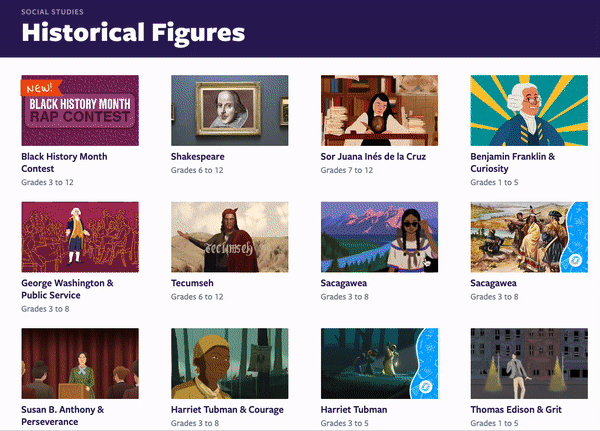
Start using these Black History Month activities
Black History Month is an opportunity to explore the rich history and contributions of Black Americans in the United States. Whether you teach elementary, middle school, or high school, incorporating engaging lessons can help students understand the importance of diversity, equity, and inclusion. Flocabulary’s K-12 standards-aligned hip-hop videos and lessons deliver rigorous, relevant learning experiences while authentically engaging students in an active and meaningful way. If you’re interested in exploring more resources for Black History Month, read our Racial Justice Resource Guide. Happy Black History Month!
New to Flocabulary? Teachers can sign up for a trial to access our lesson videos and assessment activities. Administrators can get in touch with us to learn more about unlocking the full power of Flocabulary through Flocabulary Plus.
